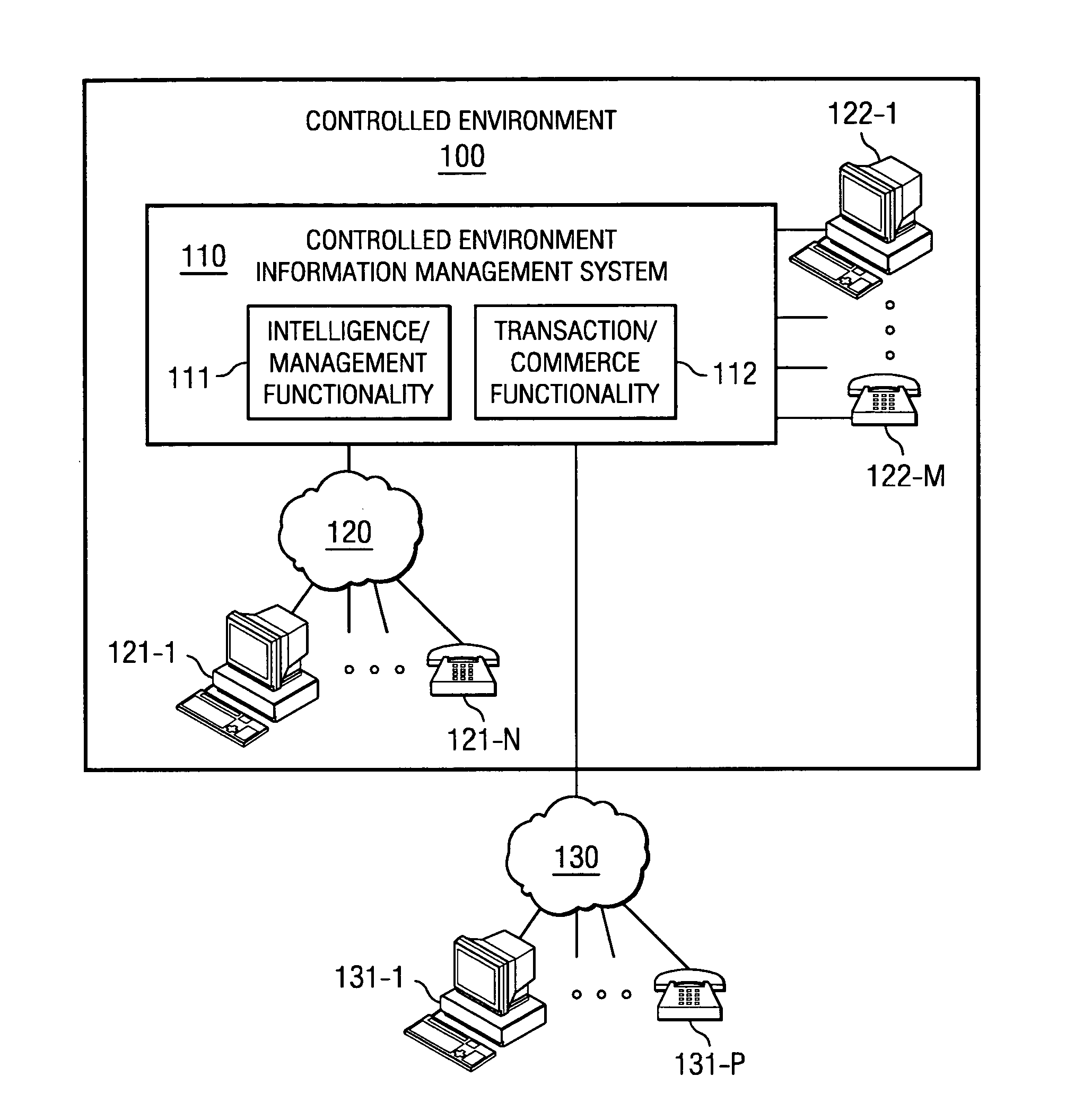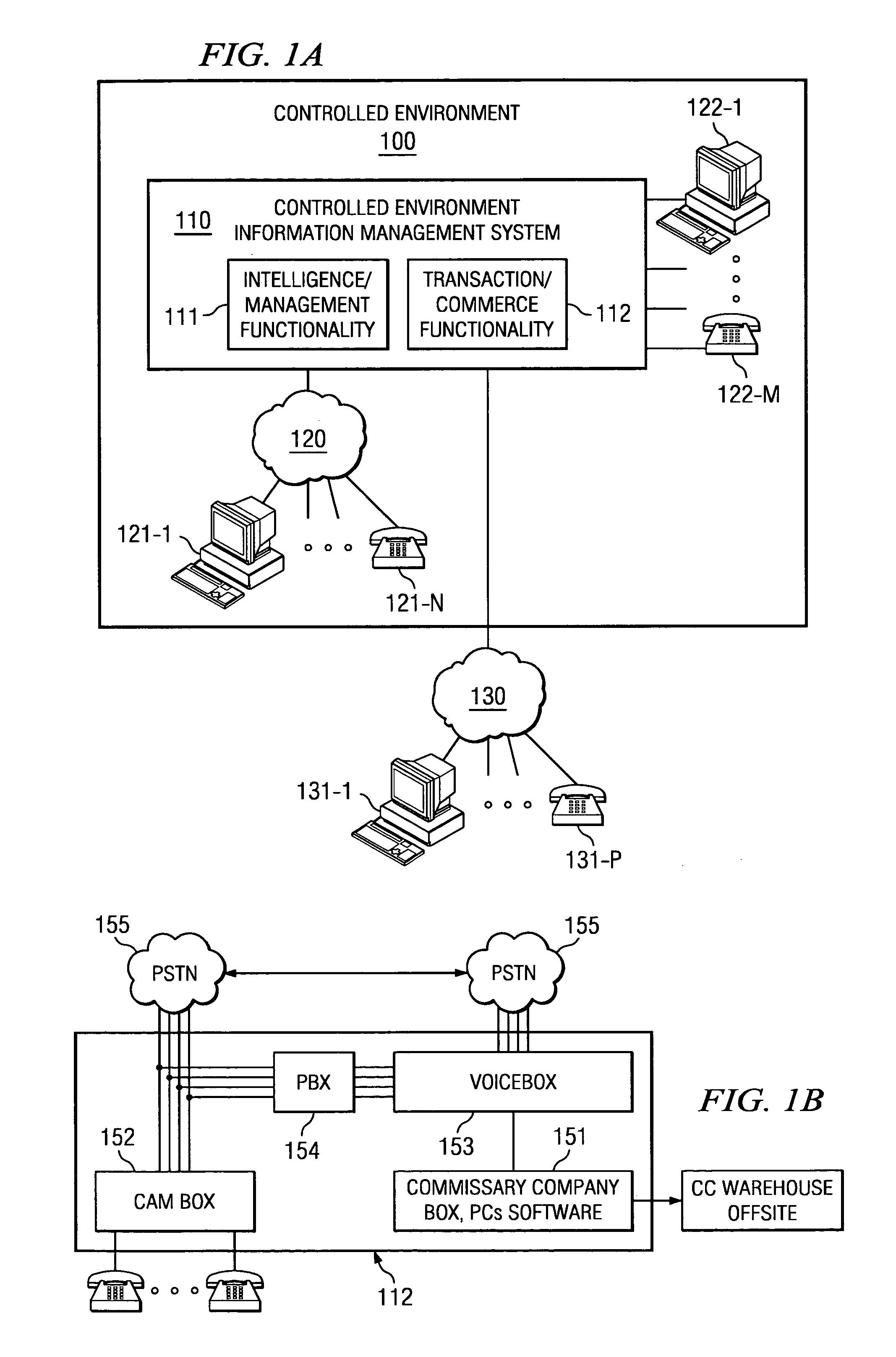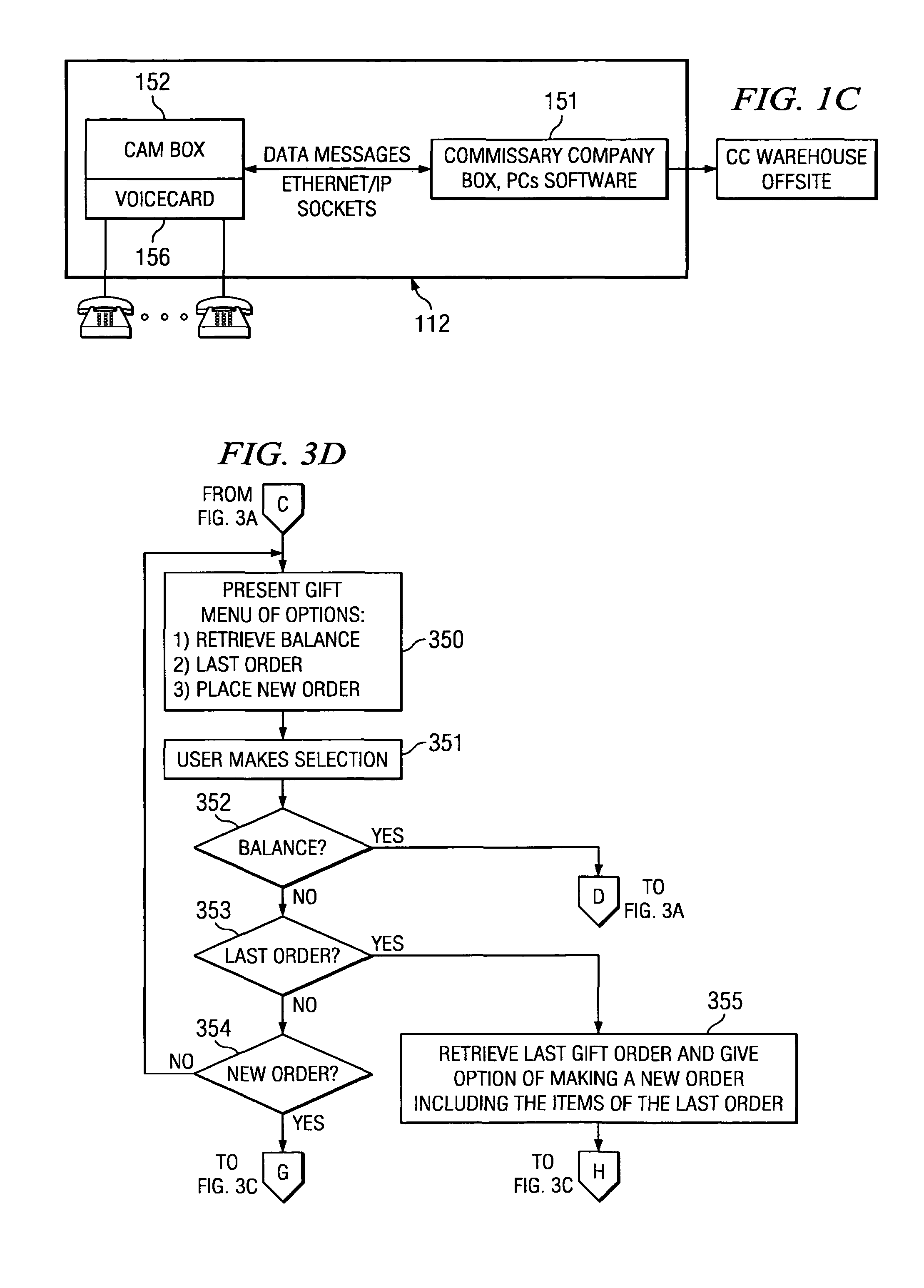However, such controlled environments often provide an environment much like a
small city in which a number of individuals work and live, thus requiring various goods and / or services associated with civilized society.
Each such task requires time away from prison personnel's primary tasks associated with the operation of the controlled environment facility and / or increases the costs associated with a
service provider serving that
population.
Moreover, such tasks as accomplished today are typically largely
paper based and require appreciable manual
processing, thereby further aggravating the directing of personnel's attention away from tasks more primary to the operation of the controlled environment facility and further adding to the costs. FIG. 4 illustrates a commissary process flow according to a typical implementation today.
In addition to issues with respect to taking time and attention away from tasks of primary importance, the aforementioned exchanges may present safety and other issues.
For example, increased contact between prison personnel and inmates can increase the danger to the prison personnel, thus interaction associated with distributing and collecting commissary orders may actually present increased danger to prison personnel.
Likewise, interaction in providing commissary services can present danger to individuals, such as
third party service providers, as well.
Additionally, collection of monies by prison personnel for deposit in inmate accounts can
expose such personnel to claims of theft of such monies.
The aforementioned exchanges also often do not result in ideal situations with respect to businesses and / or individuals associated with controlled environment facilities.
If a price change is to be made or items are to be added / deleted from the offering, old forms are discarded and new forms printed and distributed, which results not only in costly waste but also increases the time required in implementing such a change.
Additionally, spoilage associated with such forms has been found to be considerable, often requiring distribution of approximately 4 forms for every 1 form actually resulting in an order for goods / services.
Accordingly, inefficiencies exist with respect to the businesses and individuals conducting such exchanges associated with controlled environment facilities.
Moreover, satisfaction with respect to the individuals upon who's behalf such exchanges are conducted, e.g., inmates residing within a prison facility, is often less than optimum.
For example, inmates using the aforementioned paper sheets to order commissary items may have no idea whether the items they desire are in stock or even whether they have enough money in their account to purchase any or all of what they desire, until such time as their order is to be delivered and it is partially or wholly unfulfilled.
Often such personnel must look through accounting records, sometimes requiring reconciling past orders, to provide the requested account information, thereby placing further demands upon their time for tasks not related to the primary function of the facility.
Often there is no mechanism for inquiring as to the availability of particular goods and services before the individual has submitted the order.
In addition to the above customer satisfaction issues associated with individuals residing within a controlled environment facility, individuals external thereto which conduct exchanges therewith are often less than satisfied with the experience.
For example, depositing monies on behalf of a friend or family residing within a controlled environment facility typically requires delivering such monies directly to the controlled environment facility or sending checks or money orders by mail, leaving little flexibility with respect to the forms and timing of
payment.
 Login to View More
Login to View More  Login to View More
Login to View More 


